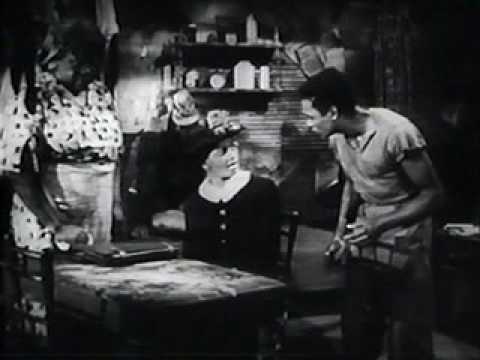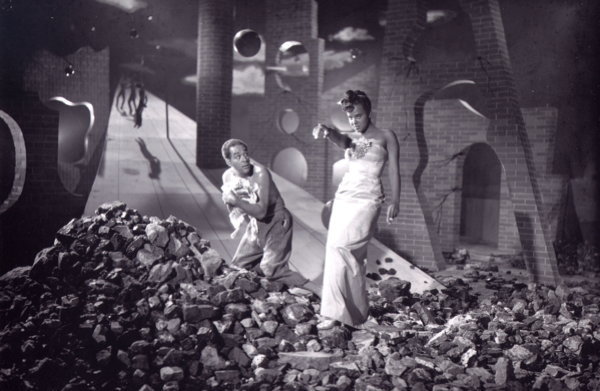



It was 1951, and nobody was making movies about racism and African American rage back then.
Much of the cast was local amateurs. As it was filmed in Argentina but set in Chicago, that makes for some odd accents.
The director was French, not exactly an expert on American race relations or African American voices. Sound was looped and dubbed to compensate for that.
The intended star, acclaimed in the Broadway production, was tied up in customs in South Africa and couldn’t make it to the set.
But “Native Son” isn’t just a troubled production of legend, and not just an artifact, a cinematic curiosity. Newly-restored to its most complete version ever, it has crackling moments and blasts of defiance and elevated rhetoric.
Richard Wright was 43 and too old to play his greatest creation, Bigger Thomas. He could act, but was never more than adequate in a part that demands charisma, seething resentment and menace. But he took on the daunting role and the film was made, a decade after Wright’s incendiary novel came out, seven years after becoming an Orson Welles Broadway play.
It’s a conventional story — young man with a police record gets a job as chauffeur for the local white slumlord and his family. He takes the rebellious daughter, at her request, to a Black nightclub where his girlfriend (Gloria Madison) happens to be singing. The daughter (Jean Wallace) and her leftist beau (Gene Michael) get drunk.
Bad things happens when Bigger takes her home, and he winds up killing her. He tries to cover his tracks as the cops close in, but we know how this is going to turn out.
Here’s what jumps off the screen 70 years later — cops dropping the “n-word” like they always have and figure they always will.
“I like n—–s. But I like’m in their place!”
Jan the leftist “white-splains” being Black to Bigger. “One day we’re gonna smash that Jim Crow system, and when we do it’ll STAY trashed!”
The tipsy daughter makes a request.
“Hey Bigger, can’t you sing? Aren’t all colored people supposed to sing?”
Her labor agitator/racial equality leftist date white-splains for her, too.
“Whites only let colored people sing the blues.”
There’s a gay snitch in Bigger’s neighborhood in the “Black Belt” of Chicago, with pool halls, theaters and bars catering to the African American Diaspora there.
Bigger’s already been in trouble with the law, and has hopes of pulling new heists when we meet him. But neither he nor his comrades have the nerve. As he stares off into space, it seems that life itself is an utter dead end.
“When you’re Black, it’s better to keep your dreams locked in your heart.”
There’s nothing sentimental about the film or the novel it’s based on, little “Raisin in the Sun” pathos. Director Pierre Chenal keeps the lighting dark and shadowy and the tone grim.
Welles wanted to film “Native Son” himself, and never could. Wright probably figured this was his one chance to turn his book into the most popular art form of all. He was right. He died in 1960, just 52 years of age. And nobody else dared film the book until the ’80s.
But this early production, restored with its primitive, malnourished edges intact, is more than just a relic from an impoverished film shoot in the early 1950s. This “most complete version” has just enough film noir fury about it to hint at the classic it might have been, and plenty of B-movie pop to it even as it is.

MPAA Rating: unrated, violence, alcohol abuse, racial slurs
Cast: Richard Wright, Jean Wallace, Gloria Madison, Willa Pearl Curtis, Nicholas Joy, Charles Cane, George D. Green
Credits: Directed by Pierre Chenal, script by Pierre Chenal and Richard Wright, based on Wright’s novel. A Classic Pictures — Kino Lorber release.
Running time: 1:47
